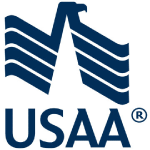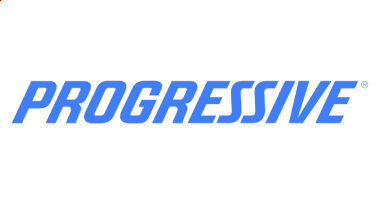Find the Best Car Insurance Quotes and Options in Vermont
The average cost of car insurance in Vermont is $957 per year. With a national average annual car insurance cost of $1,311, car insurance in Vermont costs less than it does in many other states. But your Vermont car insurance rates will be more or less than average depending on where you live in the state and your other personal risk factors.
An independent insurance agent in Vermont can help you find the right car insurance for your needs and budget. Here, we’ll explain some important facts about car insurance in Vermont.
Best Car Insurance Companies in Vermont
You can purchase car insurance in Vermont from numerous insurance companies. But which insurance company offers the best mix of coverage and value for your unique needs? We’ve selected some of the best car insurance companies in Vermont to help you get started.
- Best Vermont Car Insurance Company Overall: USAA
- Best Vermont Car Insurance Company for Minimum Liability: USAA
- Best Vermont Car Insurance Company for Full Coverage: Progressive
- Best Vermont Car Insurance Company for Young Drivers: USAA
- Best Vermont Car Insurance Company for Accident History: USAA
An independent insurance agent in Vermont can help you determine if any of these companies have the right car insurance policy for your needs and budget.
Best Vermont Car Insurance Company Overall: USAA
Our pick for the best overall car insurance company in Vermont is USAA. The carrier ranks high for claims satisfaction, ease of interaction, customer service, trust, and other important factors.
USAA was founded in 1922 by 25 Army officers who decided to insure each other's vehicles. Over time, the organization grew to serve millions in the military community, offering a variety of personal insurance products as well as other financial products and services.
USAA’s net worth has surpassed $40 billion. The carrier has more than 13 million members and 37,000 employees. USAA consistently receives high marks for financial stability, including an A++ rating from AM Best, the highest available.
Unfortunately, not everyone can take advantage of USAA’s superior performance. Only active duty and retired military members and select family members are eligible for USAA membership and insurance coverage.
| Average Monthly Insurance Cost: Car Insurance Policy | Average Annual Insurance Cost: Car Insurance Policy |
| $69.33 | $832 |
Best Vermont Car Insurance Company for Minimum Liability: USAA
If you’re looking for minimum liability coverage, USAA is again a top choice for Vermont residents. The carrier allows customers to get bare minimum auto insurance for around $215 per year.
Highly affordable coverage combined with high customer satisfaction ratings makes USAA an easy choice for eligible members.
| Average Monthly Insurance Cost: Minimum Liability Policy | Average Annual Insurance Cost: Minimum Liability Policy |
| $17.92 | $215 |
Best Vermont Car Insurance Company for Full Coverage: Progressive
The best car insurance company in Vermont for full coverage auto insurance policy is Progressive. The insurance company offers full coverage policies with premiums of around $97 per month.
Progressive receives high marks for financial stability, with an A+ (Superior) rating from AM Best. Progressive offers standard options like comprehensive and collision coverage, as well as unique options like coverage for pet injuries. The company also touts its Name Your Price Tool, which helps you find the best coverage options for your budget.
Progressive Mutual Insurance Company was founded in 1937 when the company introduced the country’s first drive-in claims location. Progressive is based in Ohio but offers car insurance across all 50 states, including Vermont. Vermont residents can look to Progressive for most of their personal insurance needs.
| Average Monthly Insurance Cost: Full Coverage Car Insurance Policy | Average Annual Insurance Cost: Full Coverage Car Insurance Policy |
| $97 | $1,164 |
Best Vermont Car Insurance Company for Young Drivers: USAA
Drivers between the ages of 16 and 25 typically pay very high car insurance rates because of the extra risk presented by their inexperience behind the wheel. While insuring a teen driver is never cheap, USAA is one of the best insurance companies for young drivers in Vermont.
Car insurance for young drivers in Vermont can cost around $223 per month with a policy from USAA. The company also offers a good student discount so students with good grades can save on their car insurance.
Unfortunately, not everyone can take advantage of USAA’s superior performance. Only active duty and retired military members and select family members are eligible for USAA membership and insurance coverage.
| Average Monthly Insurance Cost: Young Drivers | Average Annual Insurance Cost: Young Drivers |
| $222.50 | $2,670 |
Best Vermont Car Insurance Company for Accident History: USAA
Your driving record is one of the most important factors in what you pay for car insurance in Vermont. All insurance companies want to know if you’ve been at fault for an accident in the past in order to determine how risky you might be to cover.
In these cases, USAA again earns a spot on our list of top picks. USAA is one of the best Vermont car insurance companies for drivers with an accident history. The company is highly rated for its claims response and for offering affordable policies for drivers with bad records. If you’ve had an at-fault accident, you can get a car insurance policy in Vermont from USAA for about $97 per month.
| Average Monthly Insurance Cost: Accident History | Average Annual Insurance Cost: Accident History |
| $96.67 | $1,160 |
Vermont Car Insurance Requirements
Drivers in Vermont must purchase a car insurance policy that meets the state's minimum coverage requirements. The following types of coverage are required in order to drive legally in the state of Vermont:
- Bodily injury liability coverage: Protects you if you injure or kill someone else while driving your car. In Vermont, you must have this coverage in the amount of $25,000 per person and $50,000 per accident.
- Property damage liability coverage: Pays for any damage that you cause to the property of others (e.g., another’s driver’s car). In Vermont, you must have this coverage in the amount of at least $10,000 per accident.
- Uninsured motorist coverage: Protects you if you are hit by a hit-and-run driver or a driver who does not have auto liability coverage. It takes the place of liability insurance that the other driver should have but does not. In Vermont, you must have this coverage in the amount of $50,000 per person and $100,000 per accident for bodily injury, and $10,000 per accident for property damage.
Optional Car Coverage in Vermont
- Medical payments coverage: Helps pay for medical, dental, and funeral expenses for you or your passengers, regardless of who is at fault for an accident.
- Collision coverage: Covers the cost to repair or replace your vehicle if it is damaged or totaled in a collision, regardless of fault.
- Comprehensive coverage: This covers the cost to repair or replace your vehicle if it is damaged or totaled by a non-collision event such as a hailstorm or theft.
- Roadside assistance coverage: Pays for help if you are locked out of your vehicle, run out of gas, or face some other type of problem while out on the road. Your insurance company will help you contact tow trucks, locksmiths, or other forms of assistance as needed and will reimburse you for the costs of these services up to certain limits.
- Rental reimbursement coverage: Provides payment for a rental car if your vehicle is damaged and you must rent a vehicle while it is being repaired.
- Loan/lease or gap coverage: This pays the difference between what you owe on a vehicle and its cash value if it is totaled.
An independent insurance agent in Vermont will help you find a car insurance policy that includes the coverage you need.
Average Cost of Car Insurance in Vermont
The average cost of car insurance in Vermont is $957 per year, which is less than the national average of $1,311 per year. Everyone’s car insurance costs are slightly different depending on your personal risk factors (e.g., your age, gender, accident history, etc.) and the types and amounts of coverage you select.
You may also be eligible for certain car insurance discounts that can help you save on your Vermont car insurance. Be sure to take advantage of all the discounts that you qualify for.
Average Vermont Car Insurance Costs by City
The city you live in is one of the most important factors in what you’ll pay for car insurance in Vermont. This is because the city’s crime rate, severe weather frequency, traffic density, and more can all impact how at-risk you and your car are for being in an accident, being stolen, or being subject to some other kind of damage (e.g., hail damage).
The most expensive car insurance in Vermont is in Hartford, with an average premium of $1,022 per year. Meanwhile, residents of Middlebury pay much less for car insurance. The average annual car insurance rate in Middlebury, VT is $764.
Finding Car Insurance Discounts in Vermont
One of the best ways to save on car insurance in Vermont is to make sure that you take advantage of any car insurance discounts for which you may be eligible. One of the most common discounts is the multi-policy discount, which rewards you with savings if you have more than one policy with the same carrier (e.g., home and auto). Some of the common auto insurance discounts offered in Vermont include the following:
- Student driver discounts: If you have a student driver in your household, you may be able to take advantage of a good student discount if your child gets a B average or better. Many insurance companies also offer away-at-school discounts for students who won’t be using their parents’ cars while they are away at school. Your young driver may also be able to receive a discount by participating in an insurance-company-approved or sponsored safe driving course.
- Safe driver discount: Drivers who maintain a clean driving record over a period of time may be able to receive an ongoing discount from their insurance company.
- Anti-theft device discount: Some insurance companies offer discounts when your car has certain anti-theft devices installed.
- Military discount: Active or retired members of the military can often qualify for auto insurance discounts.
- Paperless billing discount: Many insurance companies offer a discount for policyholders who agree to receive paperless billing statements.
- Other car insurance discounts: Being a member of a particular group, such as an employment union, may make you eligible for a car insurance discount specifically for members.
Your independent insurance agent in Vermont can help you find all of the car insurance discounts that you qualify for.
How to Find the Best Car Insurance Quote in Vermont
Finding the best car insurance quote in Vermont requires comparing several insurance companies and making an informed choice. But you don’t have to go it alone. An independent insurance agent in Vermont can help you obtain and review quotes from multiple insurance companies and choose the one that offers the best coverage for your needs and budget. An independent agent works for you, free of charge, to help you through the process.
How to File a Car Insurance Claim in Vermont
Filing a car insurance claim in Vermont is always going to be a little stressful. But if you know what to do in advance, it can help the process to go more smoothly. If you’re in a car accident, here are some tips for filing your insurance claim:
- Check for and tend to injuries: Check yourself, your passengers, and anyone else involved in the accident for injuries. Seek immediate medical treatment for anyone who is injured.
- Call the police: Filing a police report ensures that your accident is on the record and all appropriate information has been collected. That way, your insurance company will have a reliable source for information about the details of your accident.
- Contact your independent insurance agent: Your Vermont independent insurance agent can get the process started by connecting you with your insurance company or by even filing the claim for you. Your agent can guide you throughout the claims process.
- Schedule an appointment with an adjuster: Your insurance company will likely want to evaluate the damage before you seek repairs for your car. That means you’ll need to set up an appointment with an adjuster who works for your carrier.
- Get repairs: If necessary, get your vehicle repaired from a reputable auto body shop or from a shop recommended by your insurance company.
- Get a rental vehicle: If you’re without your car for a while as it's being repaired, consider getting a rental vehicle. If you have rental reimbursement coverage, you’ll have some help paying for the cost of your rental car.
An independent insurance agent in Vermont can help you through the claims process and answer your questions about how best to file your claim.
How does your city measure up to the national average?

National average time spent commuting 26.9 Min

National average car thefts per 1,000 2.3 Year

National average car insurance cost $1,311 Year
| City | Commute time (min) | Auto theft rate / 1,000 | Annual insurance cost |
| Barre | 20.2 | 0 | $943 |
| Bennington | 17.8 | 1.07 | $936 |
| Brattleboro | 18 | 0.78 | $955 |
| Burlington | 18.6 | 0.58 | $914 |
| Essex | 27.7 | 0.27 | $958 |
| Hartford | 18.9 | 0.62 | $1,022 |
| Middlebury | 18.1 | 0.22 | $764 |
| Milton | 26.4 | 0.18 | $947 |
| Rutland | 18.3 | 1.38 | $965 |
| Shelburne | 21.5 | 0.38 | $984 |
| South Burlington | 17.5 | 0.4 | $874 |
| Springfield | 25 | 0.11 | $886 |
| Williston | 20 | 0.39 | $922 |
Vermont Car Insurance FAQs
The average cost of car insurance in Vermont is $957 per year or about $80 per month.
Car insurance in Vermont covers medical expenses and property damage costs that occur due to a car accident. If you’re at fault for an accident, your bodily injury liability and property damage liability coverage pay for the damage or injuries you inflict on other drivers or their passengers.
You can cover some of your own losses with uninsured and underinsured motorist coverage, comprehensive coverage, and collision coverage.
Vermont’s car insurance laws require the following coverage, at a minimum:
- $25,000 per person and $50,000 per accident for bodily injury liability coverage
- $10,000 per accident property damage for liability coverage
- $50,000 per person and $100,000 per accident bodily injury for uninsured motorist coverage
- $10,000 per accident property damage for uninsured motorist coverage
About 6.8 percent of drivers in Vermont are uninsured. Nationwide, the average is 13 percent.
Clearly, not all drivers follow the mandatory car insurance rules in the state. That’s why you need uninsured motorist coverage to protect yourself when you’re involved in an accident, and the at-fault driver does not have car insurance.
Vermont drivers have a lot of options for car insurance.
Some of the best car insurance companies in Vermont are USAA and Progressive. Other top companies in the state include Safeco and Travelers.
Car insurance is more expensive in Massachusetts than it is in Vermont. In Massachusetts, the average annual cost of car insurance is $1,460, while the average annual cost of car insurance in Vermont is $957.
Everyone has personal risk factors, such as their age, gender, city, type of vehicle, and more, that make their individual car insurance rates more or less than the average in their state.
In Vermont, you can take a safe driving course as a new driver in order to obtain a 10% discount on auto coverage. The same is true when you take a mature driving course. The majority of carriers offer discounts on items that reduce their risk.
Yes, auto insurance is mandatory in Vermont. It is illegal to drive in Vermont without the minimum auto liability insurance required by state law.
Do You Know What Your Vermont Car Insurance Covers?
https://www.thezebra.com/insurance-companies/usaa-reviews-coverage-options-and-ratings/
https://www.thezebra.com/auto-insurance/vermont-car-insurance/#the-cheapest-car-insurance-companies
https://www.usaa.com/inet/wc/annual-report-to-members
https://www.thezebra.com/auto-insurance/vermont-car-insurance/



